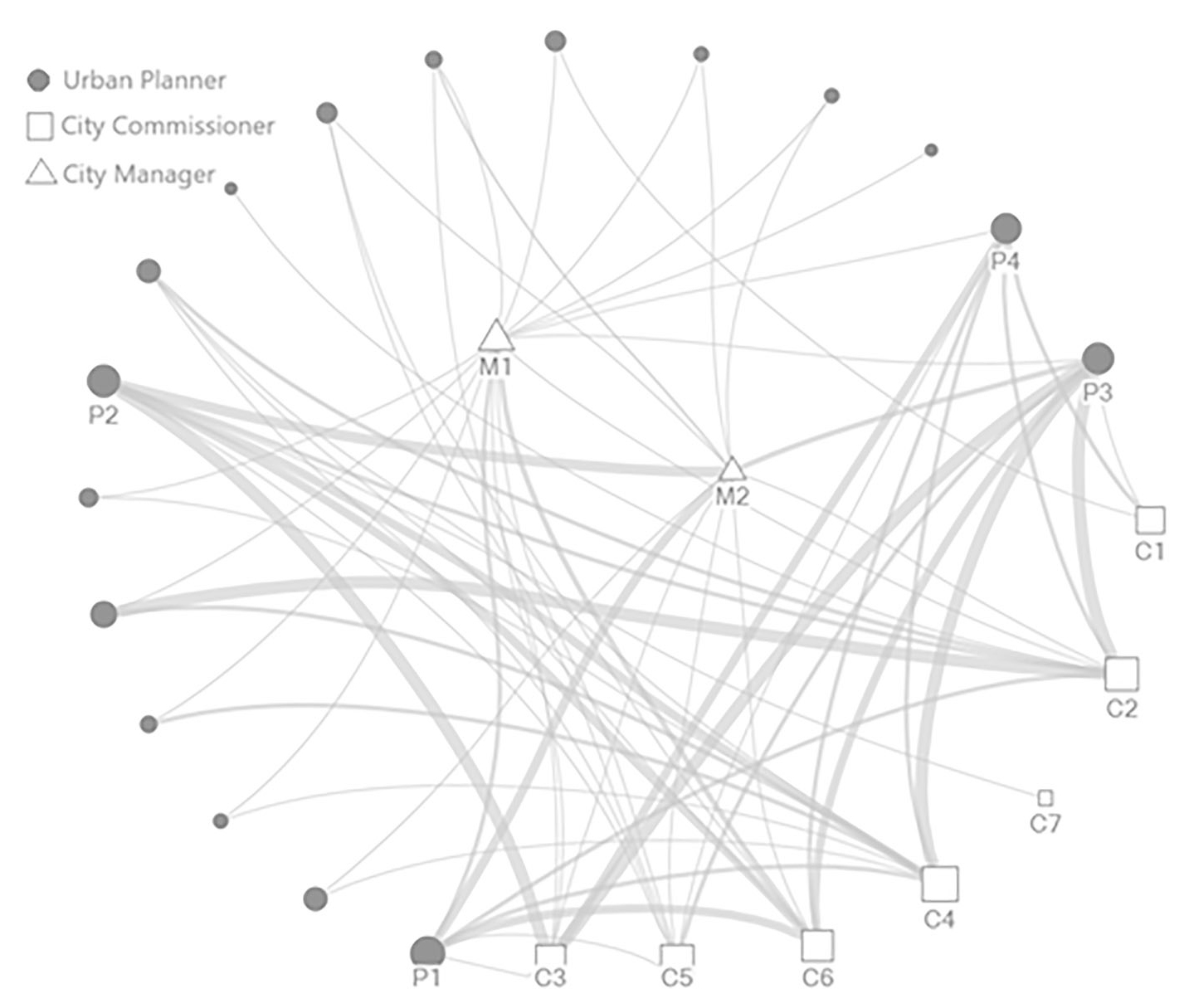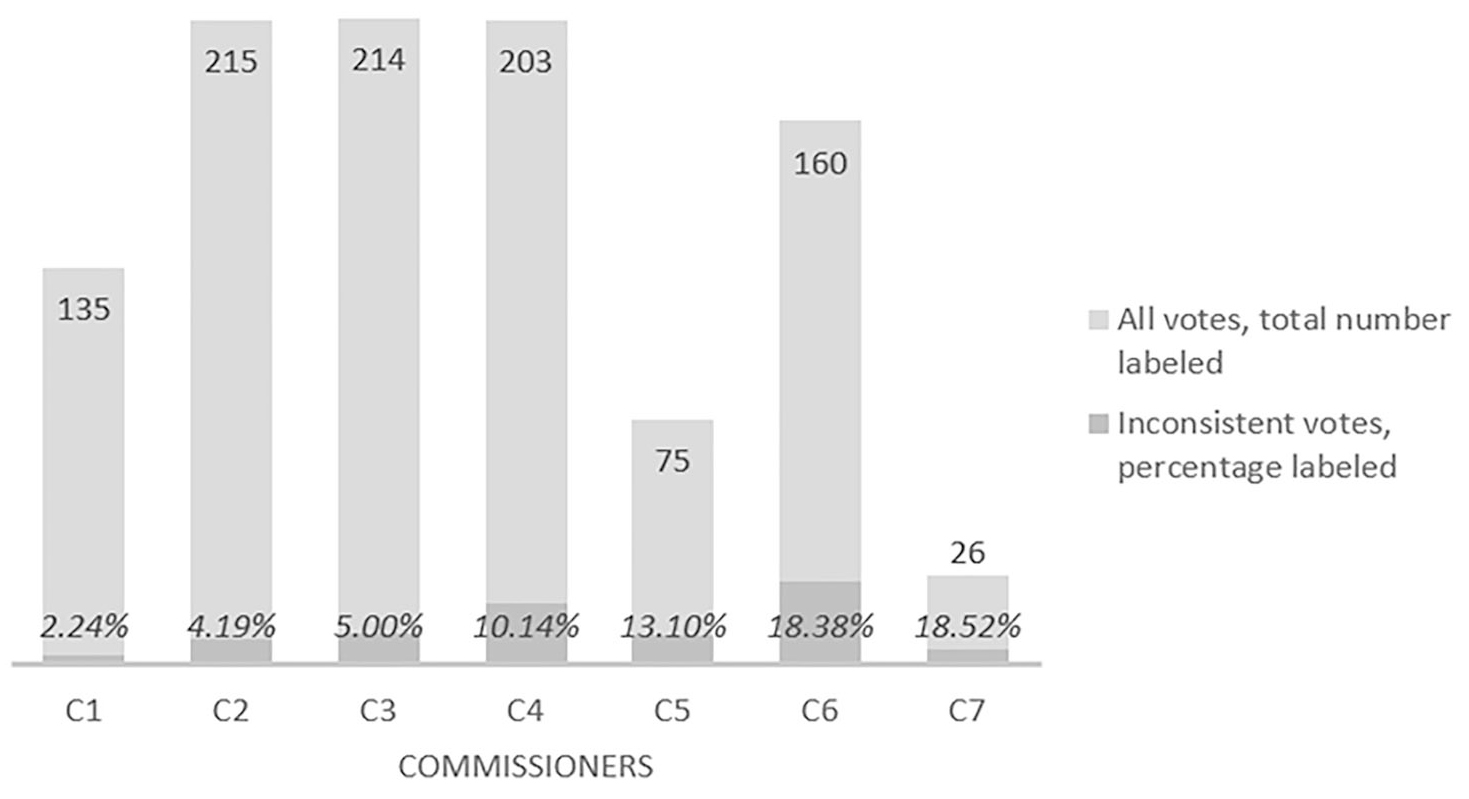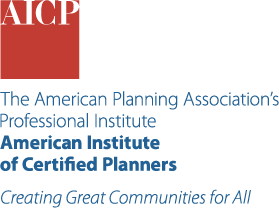Uncovering JAPA
Emotions in Emails Matter: Communication Dynamics Between Planners and Politicians

How often should planners email politicians? In "Power of Persuasion: How Planners Shape Decisions Through Communication"(Journal of the American Planning Association, Vol. 91, No. 3), Li Fang, Yijia Wen, Jingze Zhang, Corey Xu, Gordon Erlebacher, and Samuel R. Staley use text mining and a self-developed dynamic network model to analyze communication dynamics between planners and politicians. Their findings suggest that effective, decentralized, and positive communication from planners can influence politicians to vote in alignment with planners' recommendations.
Planners as Catalysts
Most planning decisions are ultimately made by politicians. Planners collect information, share public sentiment, connect sources of data, and provide expert opinions — among myriad other tasks.
Effective communication with elected officials is essential for planners to ensure their work is valued and to shape decision-making processes. By bridging the gap between expert knowledge and political action, planners can make their recommendations not just heard, but embraced.

Figure 1: A communication network between planners and city commissioners.
This study relied on a total of 562 email communications between planners, city managers, and city commissioners during the study period from August 2011 to June 2017 in the city of Tallahassee, Florida. The authors used only emails sent before a vote and controlled for each politician's prior voting patterns. Notably, planners initiated 83 percent of the emails analyzed, while commissioners responded to just 17 percent. In contrast, planners replied to 82 percent of emails initiated by city commissioners.

Figure 2: Voting patterns of city commissioners during the study period, highlighting votes inconsistent with planners' recommendations.
During that time, Tallahassee commissioners voted on 154 land use decisions, 95 economic development decisions, and 95 transportation decisions. Politicians were least likely to vote in alignment with planners' recommendations on issues related to economic development and community decisions.
Inconsistencies were most evident in decisions concerning business attraction and public property management, prompting the authors to reflect on the role of corruption in economic development projects, where politicians favored more generous subsidies for certain businesses.
In fact, the authors acknowledge that this study was rooted in a local corruption case. There was significantly more alignment on decisions related to the environment, housing, and transportation.
For transportation decisions, politicians generally vote consistently with planners' recommendations. The frequency of communication from planners does not appear to influence commissioners' votes. However, commissioners' votes showed a statistically significant positive association with the sentiment of planners' emails across all decision types — except transportation.
Modeling for Emotions
The authors used a prebuilt software tool called Text2Emotion, a Python package, to identify five emotions in emails: anger, surprise, fear, happiness, and sadness.
The scores for the five emotions add up to one, so the authors used sadness as the baseline to avoid perfect collinearity.
Additional variables included in the study were email frequency from planners and city managers, gender, age difference, shared university alumni status, average voting consistency, and other network characteristics.
When Does Planners' Messaging Matter?
The authors offer several explanations for their findings. They found that politicians responded more positively to emails from multiple planners than to the same number of emails from a single planner.
This may be because politicians perceive multiple planners as diverse sources of information, which reinforces their confidence. Planners who work directly with constituents can strengthen this perception. Often, planners summarize public meeting feedback, including direct quotations of public opinions, which can lead politicians to assume that planners reflect constituent views.
The authors also identify how a relationship built through numerous positive interactions can be significantly strained by a single negative comment. Negative sentiment appears to have a stronger association with politicians diverging from planners' recommendations.
Consistent, well-crafted communication can help planners assert their recommendations in political decision-making. The authors caution against generalizing their findings outside the United States, but believe the results are broadly applicable to cities within the U.S.
KEY TAKEAWAYS
- Take the initiative to reach out to politicians.
- Establish positive communication channels.
- Strengthen collaboration within the planning department.
- Enhance politicians' confidence by presenting unified information from various planners.
Top image: Photo by iStock/Getty Images Plus/ PeopleImages
ABOUT THE AUTHOR


